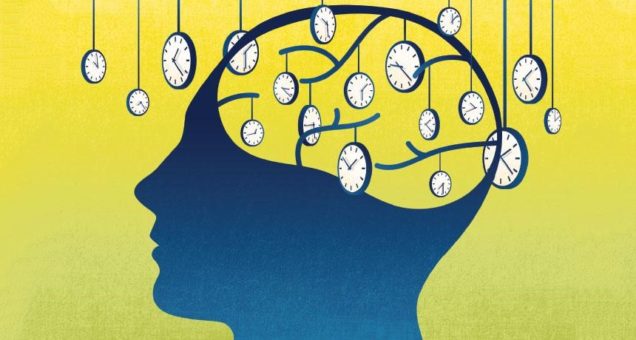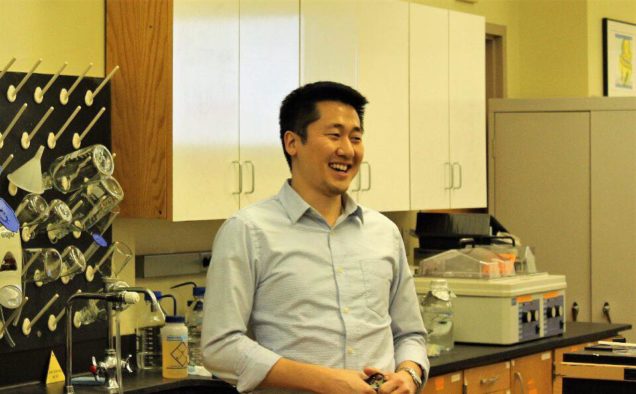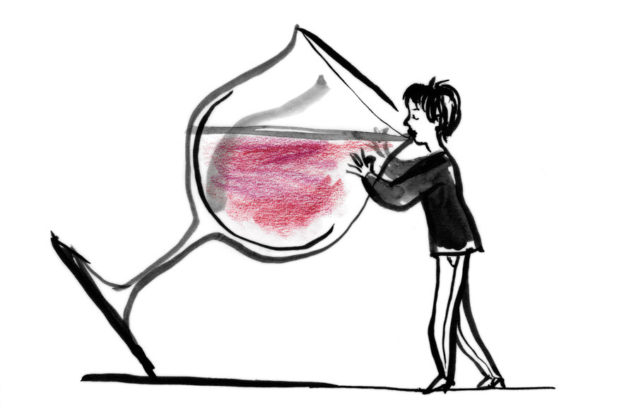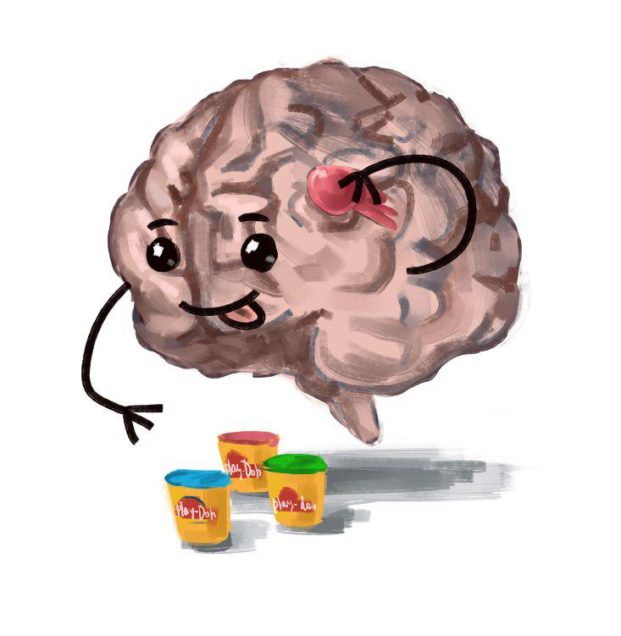Does language influence the way we think about time?

Time, as abstract as it is, is a crucial part of everyday life. Like other fundamental domains of experience, the idea of time is strongly associated with our brains. We use language all the time to express ourselves, but does language also shape how we see the world by influencing our concept of time?
According to studies conducted by Lera Boroditsky, a cognitive science professor at the University of California, San Diego, the concept of time does differ dramatically across languages. She found that people all over the world share a common trait despite speaking very differently: relying on space to organize time. For example, time naturally flows from left to right for English speakers, who read from left to right. However, Arabic speakers, who write from right to left, tend to organize stories from right to left. In Pormpuraaw, a remote Australian Aboriginal community, people don’t use the words “left” or “right” at all. Instead, they use “north,” “south,” “east,” and “west.” Consequently, Pormpuraawans represent time from east to west and think about time in unique ways: they would lay out a story from left to right when they are facing south, from right to left when facing north, toward the body when facing east, and away from the body when facing west.
A 2001 paper by Boroditsky shows that Mandarin speakers arrange time both horizontally, like English speakers, and vertically. In Mandarin, the words “up” and “down” are often used to describe earlier and later events, respectively. As a result, Mandarin speakers in the experiment were faster to verify that “March comes earlier than April” when given vertical primes than they were when given horizontal primes.
What if you are bilingual? According to Boroditsky, one possibility is that you have a different mind for each language and switch from one to the other. On the other hand, you could argue that your mind is fully integrated. The answer, in fact, lies somewhere in between. Bilinguals never “turn off’ a language; the language they are speaking in just becomes more active.
Writer: Zijing Sang
Editor: Sophia Hon
Sources:
http://journals.sagepub.com/doi/pdf/10.1177/0956797610386621
FACULTY FEATURE: Shoai Hattori

Boston University has always been home to Dr. Shoai Hattori, a lecturer and the assistant director of the Undergraduate Neuroscience Program. He embarked on his neuroscience journey over 14 years ago as an undergraduate student at BU and returned to his alma mater to teach alongside many of the same professors who mentored him.
Upon asking Dr. Hattori about his childhood home, he pointed out the window, “actually, I can walk home from here!” His home has always been Boston, a melting pot of bright, driven intellects, which he says accounts for part of his early development. He grew up in a very liberal and progressive environment. His mother, the caretaker of five children, held a psychology degree, while his father, an MD-PhD, conducted diabetes research. He attended Brookline High School, which is ranked one of the best high school programs in the nation. Needless to say, academics were a priority in his neighborhood; nevertheless, his ambition was driven primarily by a keen interest in his studies rather than by his environment.
Dr. Hattori graduated from Boston University in 2008 with a degree in Biology. “Neuro didn’t exist when I came here…[but] I really liked biology in high school; I like to know how things work.” Though he had plans to attend medical school when he first arrived, pivotal events in his life led him to pursue research instead. “[Deciding between MD vs. Ph.D.] was a constant debate throughout my college career, I had many conversations with my advisor...the one event that really decided it for me was my grandfather.” His grandfather's battle with locked-in syndrome came at a time when the field of neuroprosthetics and machinery was rapidly advancing, and he “became really fascinated by it…[it] pushed [him] in the right direction.” His research experience began at the Boston University School of Medicine, where he worked at the pharmacology department looking at gamma receptors and their relation to cocaine addiction. After that, he proceeded to join Dr. Howard Eichenbaum’s Lab, where he got to explore studies on both molecular and systems neuroscience; he stayed there for the remainder of his undergraduate college career.
After graduation, he yearned to do the “brain-machine interface sort of work,” so he applied to schools that could give him that kind of opportunity. He ultimately decided to attend The Feinberg School of Medicine at Northwestern University and obtained his Ph.D. in Neuroscience. He worked in a memory lab with Dr. John F. Disterhoft during his years there. One of his most memorable experiences at the institution was co-founding the Northwestern University Brain Awareness Outreach program (NUBAO), a graduate student-led public outreach initiative that focuses on educating and inspiring the Chicago community to learn more about the brain. This program later grew to become a non-profit organization; he shared the story of its development:
“Some Ph.D. programs train you just to do research...my program was very good at encouraging students to explore other areas. One way that my program encouraged that was by giving funding to start up whatever you wanted to. So, I remember having a chat with my colleague, Jessica Wilson, about doing something for Brain Awareness Week…”
Brain Awareness Week (BAW) is a campaign ran by the Dana Foundation that aims to increase awareness about the benefits of brain research. “She was thinking very small scale, but I was like ‘no, let’s go big.’ So I approached the program, pitched the idea, and they said ‘great, yeah, that sounds awesome! Here’s some money!’” Dr. Hattori was given a 500 dollar budget for the event, but with hard work and the help of many fruitful connections, he was able to make the event a great success.
“The first year that we organized an event - with our 500 dollar budget - we had around 60 volunteers, and at least 300 people showed up. We then decided to start our own group. We applied for additional funding and became recognized as an actual group. We actually got a grant of a couple thousand dollars from the University, and we just kept doing events. What started off as a small event is now a non-profit.”
The organization became recognized by the Society for Neuroscience and is now hosting events for its eighth year. His involvement in this organization inspired the idea of BRAIN Day, an annual outreach event held by the Mind and Brain Society at BU. You can learn more about NUBAO at http://www.nubrainawareness.com.
After graduating in 2014, Dr. Hattori considered many possible paths but ultimately decided to come back to Boston University. “I was tired of doing research, but I really enjoyed teaching,” he says, “actually, I was at a conference in San Diego, and Paul [Lipton] was there...We met up and talked about how he had started the neuroscience program at BU and what areas [of the program] needed improvement.” He also claims that he really missed his city and wanted to come back home. He finds fulfillment in being an educator at his alma mater and asserts that students should go into neuroscience because “there is so much you can do with it, plus, the brain is cool!”
Dr. Hattori currently teaches three classes at BU: Neural Control of Movement (NE526), the lab portion of Introduction to Cellular and Molecular Biology (NE102), and the lab portion of Principles of Neuroscience with Lab (NE203). You can find more information about these courses in the Boston University Course Catalog.
Writer: Stephanie Gonzalez
Editor: Enzo Plaitano and Yoana Grigorova
Brain Food

Today’s food industry offers people diets of concentrated sugar and carbs, and does so at low prices. Visiting a fast food restaurant, one finds that healthy options are often far more expensive than calorie-loaded favorites. This is evident at McDonalds, where a salad costs more than a Big Mac. This trend in pricing is not exclusive to fast food chains. Prices for carbonated drinks and butter have decreased over time while vegetables and fruits have become more expensive. Consumption of cheap, unhealthy foods can be bad for our brains as well as our bodies. With greater access to foods with more sugar, carbohydrates, and fat, people today are at higher risk of developing Alzheimer’s disease than ever before.
A group of researchers studied the effects of nutrients on brain composition. They found that eating unhealthy foods increased amyloid-beta protein production, decreased gray matter volume, and decreased glucose metabolism. Aggregation of amyloid-beta protein is one of the key markers for Alzheimer’s disease, while a decrease in gray matter volume identifies brain atrophy, a common cause of dementia. The brain runs on glucose, so measuring the rate at which glucose is metabolized can be a good measure of decreases in cognition. The researchers found that vitamin B12, vitamin D, and zinc, compounds found in healthy foods such as cooked beef, oysters, sardines, cheese, spinach, and kale, lowered amyloid-beta protein levels, increased gray matter volume, and increased glucose metabolism. Vitamins E, A, and C, monounsaturated fats, polyunsaturated fats, and carotenoids, all found in citrus fruits and orange hued vegetables such as carrots and tomatoes, were also strongly associated with increased glucose metabolism. On the other hand, trans-saturated fats, saturated fats, cholesterol, and sodium, typically in high concentration in cheap, unhealthy foods, lowered glucose metabolism, gray matter volume, brain activity levels, and induced brain atrophy.
Though the general trend among food items appears to be that cheapness excludes healthfulness, one glaring counter-example is America’s favorite drink: coffee. Drinking the caffeine found in coffee can yield short-term increases in alertness and cognitive function and seems to decrease risks of cognitive decline in the long-term. A study found that coffee and tea consumption resulted in higher scores in cognitive tests and lowered risks to Alzheimer’s disease, dementia, and mild cognitive degeneration. In combination with a better diet and consumption of coffee or tea, one can make their brain healthier and lower their risk of developing Alzheimer's.
Writer: Audrey Kim
Editor: James Kunstle
Sources:
Panza, Francesco, et al. “Coffee, Tea, and Caffeine Consumption and Prevention of Late-Life Cognitive Decline and Dementia: A Systematic Review.” The Journal of Nutrition, Health, and Aging, vol. 19, no. 3, pp. 313–328. Web of Science.
Berti, V, et al. “Nutrient Patterns and Brain Biomarkers of Alzheimer's Disease in Cognitively Normal Individuals.” JOURNAL OF NUTRITION HEALTH & AGING, vol. 19, no. 4, Apr. 2015, pp. 413–423. Web of Science.
https://www.dietitians.ca/
https://economix.blogs.
https://ods.od.nih.gov/
What is PANDAS?

PANDAS, a fairly new disorder, has been gaining media attention because of the lack of research surrounding the factors and the unknown prevalence of the disorder itself. PANDAS, commonly known as Pediatric Autoimmune Neuropsychiatric Disorders Associated with Streptococcal Infections, is a disorder that stems from untreated strep and results in the debilitating onset of obsessive compulsive disorder like symptoms, tics, anxiety, and changes in motors skills (changes in handwriting, speech, balance); these symptoms can happen overnight and have alarmed doctors and loved ones alike. Interestingly, PANDAS is often associated with the DSM-IV category, “Obsessive-Compulsive and Related Disorders” because of its OCD symptoms. Now, how does an untreated strep infection lead to these life-changing effects?
When strep goes untreated, it may trigger an immune response that results in inflammation on the brain—this inflammation is the direct cause of the onset symptoms. The symptoms will usually occur 4-6 months after the initial strep reaction. Streptococcal infections are often treated with antibiotics; however, the antibiotics may fail to eradicate the bacteria and build up will start to occur. The strep bacteria will partake in a process called molecular mimicry, in which the bacteria will place molecules familiar to the body (molecules found in tissue, on the heart, etc.) on its cell wall in order to remain undetected by the immune system. Once the immune system detects this foreign creation, antibodies will attack the mimicked molecules and the actual bacteria; this may be a cataract for the creation of antibodies that will start to target the brain, leading to the neuropsychiatric symptoms discussed above.
Other onset symptoms of PANDAS may include trouble sleeping, hyperactivity, inattention, separation anxiety (difficulty separating from parents), and mood changes. Children with PANDAS often experience the symptoms in episodes; there may be full remission of the OCD like symptoms during therapy and children often recall having good and bad days in regards to the symptoms. Treatment for this disorder typically involves antibiotics, as fighting the bacteria will alleviate the symptoms in due time. Immunoglobulin therapy has also been considered as a remedy for severely ill patients, as this plasma exchange is often used for immune disorders and may have side effects such as risk of infections, headaches, vomiting, and dizziness.
As more research is conducted on the subject, we can only hope that the prevalence will soon be known in order to familiarize the public and doctors with this ambitious disorder.
Writer: Gabriella Ademi
Editor: Audrey Kim
Sources:
https://www.nimh.nih.gov/health/publications/pandas/index.shtml
http://www.pandasnetwork.org/understanding-pandaspans/what-is-pandas/
FACULTY FEATURE: Lucia Pastorino

Sitting across from us in the comfort of her very practical, but nevertheless, cozy office space, Dr. Lucia Pastorino savors her chicken and rice. “Do you mind if I eat lunch? I haven’t eaten all day,” she asks as she gets out her lunch box. A prominent member of the Undergraduate Neuroscience Department, Dr. Pastorino keeps a tight schedule; nonetheless, she takes the time to share her inspiring story of exploration, discovery, and growth.
Dr. Pastorino was born in the beautiful city of Lecco, Italy, a small industrial town north of Milan. “It’s beautiful because it’s right at the lake and there are mountains,” she reminisces, “it was a city that taught me a lot; it’s a city of hard workers.” The industrial nature of the city produced a population that mostly consisted of business professionals and entrepreneurs; however, that was not her calling. “I really didn’t want to be in business. I wanted to be in the science field, so I chose [to pursue a] B.S./M.S. for my undergraduate studies.”
Dr. Pastorino’s undergraduate years were spent at the University of Milan studying Medicinal and Pharmaceutical Chemistry, which she loved because of its interdisciplinary applications to studies of medicine. “I wanted to see things from all different angles,” she explains, “with Medicinal Chemistry, you have chemistry, physiology, anatomy, biology, and biochemistry... you get to bring everything into the lab in one experience.” When she started her thesis, Dr. Pastorino was working in a Neuropharmacology lab that conducted studies on Alzheimer’s Disease, which then became the basis of her career as a researcher studying how modifications in the protein APP affect the progression of Alzheimer’s Disease. In 1996, she published her first paper with this lab, exploring the functions of beta-secretase at the genetic level. After graduation, she completed a fellowship in Geneva and eventually earned a Ph.D. in Neuropharmacology at her alma mater.
Dr. Pastorino first arrived in the United States on October 2nd, 1999 for her postdoctoral fellowship at Mount Sinai School of Medicine in New York City. “I remember landing at JFK and thinking, ‘what a beautiful skyline,’” she recalls, “I couldn’t wait to get out of the airplane. I loved it.” She also recalls her living space, which was “altogether, as big as [her office].” In spite of her cramped apartment - which also came with mice and roaches - Dr. Pastorino claims that her three years at Mount Sinai were the best years of her life. What she loved most about New York was that “[she] was nobody, with the happiness to be nobody,” which gave her the freedom to be independent and pursue her own adventures. She proceeded to publish another paper in 2002 concerning the intracellular transportation of beta-secretase, which contributes to the accumulation of Amyloid-beta plaques in the brains of Alzheimer’s patients.
At Mount Sinai, Dr. Pastorino met her future husband while taking English classes at a different institution. Shortly after they met, her then-boyfriend moved to Boston, and a year and a half later, she followed. In 2003, Dr. Pastorino worked as a researcher and instructor of Medicine at the Beth Israel Deaconess Medical Center. Three years later, she became an instructor at the Harvard University Extension School. There, she pursued her passion for teaching. “I love it,” she tells us, “I love telling you what this is all about. I get too excited!” In 2013, Dr. Pastorino became a lecturer of Neuroscience at Boston University. When we asked what attracted her the most to the university, she responds, “BU [has] a very cooperative and diverse community of scientists that [really enriches my teaching experience]. I wouldn't be able to do the same somewhere else.” The neuroscience department at BU, which is ranked number 41 globally by US News, has a special place in her heart. “You guys, your motivation, your interest, your excitement - you’re challenging sometimes,” she explains, “we always hope to challenge you in a good way, knowing we will be challenged back. This is what makes all of us better, it keeps us growing.” Dr. Pastorino’s goal as an educator is to make sure that her students don’t fear the subjects she teaches and to make her classes as enjoyable as she can. She credits her department for giving her the freedom and flexibility to achieve her goals, and applauds “[the department’s] ability to be appreciative of all [their] resources and to push [themselves] to do something new.”
Dr. Pastorino currently teaches four classes at Boston University: Introduction to Cellular and Molecular Biology (NE102), Biology of Neurodegenerative Diseases (NE525), Translational Research in Alzheimer’s Disease (NE535), and the Pre-lab portion of Organic Chemistry I with Integrated Science Experience Lab (ISE II). You can find out more about these classes on the BU course catalog.
Writer: Stephanie Gonzalez
Editors: Enzo Plaitano, Yasmine Sami, and Yoana Grigorova
Birth Order and How It Shapes Our Lives

We’ve all heard these stereotypes: firstborns are usually more conscientious, disciplined, and ambitious since their parents are stricter with them; middle children tend to be peacemakers, competitive but understanding; youngest children are generally more outgoing and free-spirited.
Although whether birth order significantly affects personality traits is not conclusive, research has shown that birth order plays a powerful role in job success. A number of studies have found that firstborns and only children are more likely to be in high-achieving professions such as law and medicine as well as leadership positions such as CEOs and U.S. presidents. Examples include Winston Churchill, Oprah Winfrey, and Bill Clinton. On the other hand, laterborns are overrepresented among successful athletes in general. While their older siblings tend to do better academically, laterborns often choose to strive for difference and create their own niche.
Joseph Doyle, an MIT economist, studied how birth order impacts delinquency. The research focuses on boys because they have a much higher chance of getting in serious trouble as teenagers than girls do. The results indicate that the second-born children, compared to their older siblings, are 25 to 40 percent more likely to go to prison, get suspended in school, and enter the criminal justice system. So what sets second-born boys apart from their older brothers? Doyle suggests that parenting is an important factor. Parents tend to give more attention to their firstborns and divide their time and resources as more children come along. Another possible explanation is that firstborns and laterborns, despite sharing the same family and environment, have different role models early in life. Firstborns look up to adults, whereas laterborns look up to their older siblings, who are often two- or three-year-olds.
Birth order certainly shapes our lives in many ways and reveals unseen and interesting patterns. However, it is worth noting that birth order is not absolutely deterministic of who we are. For instance, many firstborns are good at sports, and many world political leaders are younger siblings.
Writer: Zijing Sang
Editor: Sophia Hon
Sources:
https://www.npr.org/2017/07/04/535470953/research-shows-birth-order-really-does-matter
https://www.npr.org/2010/11/18/131424878/how-much-does-birth-order-shape-our-lives
http://edition.cnn.com/2008/LIVING/worklife/10/22/cb.birth.order.career/index.html
http://www.mit.edu/~jjdoyle/BDFK_Delinquency.pdf
https://www.parents.com/baby/development/social/birth-order-and-personality/
Alcohol and Its Effect on the Brain

When one thinks of parties, bars, or clubs, alcohol inevitably comes to mind. We drink before a party to help ourselves reduce anxiety and increase euphoria before dancing or mingling with other people. Because of these effects, alcohol has become the one of the most widely used recreational drugs in the world. So what exactly makes alcohol so appealing and why do we keep chasing after it despite knowing its negative effects in large doses?
With the first sip of the drink, we begin to see changes in two major neurotransmitters: GABA and glutamate. The increase in GABA keeps the brain calm while the glutamate keeps the brain active. The specific areas that are affected in the brain are the frontal lobe, which controls attention and planning, and the cerebellum, which controls movement. This is why after a few drinks, you may become uncoordinated and inhibited in your ability to think straight. After even more drinks, the levels of the neurotransmitters start to affect regions of the hippocampus, which can cause a loss of memory or black outs with increasing doses. After all the drinking has subsided, we leave our brain in a state to retune the neurotransmitter levels by itself, which could cause lasting damage if a heavy amount of alcohol was consumed. While an occasional drink has been shown to be healthy for the body, too much drinking leads to damage in the brain and a tendency towards alcoholism.
So how exactly do people become alcoholics? A study at Texas A&M has shown that alcohol seeking behavior may be a result of increasing connections between neurons in your brain. Through long-term potentiation, the pattern of activity described above is maintained. Wang et al. specifically tested this phenomenon by mimicking the effect of alcohol with optogenetics, which uses proteins sensitive to light to turn on and off certain regions in the brain. They used optogentics to recreate the memory and learning from alcohol, and both methods showed an increase in the strength of connections. With these findings, modulation of these regions in the brain may become an effective treatment for alcohol addictions. However, as exciting as these findings are, there is still a lot of research to be done before these methods can be used as treatments for addictions. In the meantime, drink cautiously and have fun!
Writer: Albert Wang
Editor: Sophia Hon
Sources:
http://www.imperial.ac.uk/news/169859/why-alcohol-makes-your-brain-feel/
How is the Brain Plastic?

For a long time, science has believe that the brain is “hard-wired” like a computer, suggesting that neuronal connections in the brain are completely fixed. However, when fMRI techniques were developed, scientists were able to view brain activity and the truth became clear that the brain is not static, but plastic. No, that doesn’t mean that the brain is literally made of plastic. What it does mean, though, is that our brains are malleable and able to change. The term “neuroplasticity” refers to the ability of the brain to reorganize its neuronal connections based on both external and internal stimuli, altering how we think and behave.
One way in which neuroplasticity affects our lives is by compensating for brain damage. If a brain region associated with a particular function is impaired, another brain region may take over that function. Strokes, injuries, birth abnormalities, PTSD, depression, and learning disabilities can be ameliorated thanks to the ability of the brain to reorganize itself. In addition to brain injury, neuroplasticity also plays a role in learning. If one becomes an expert in a specific skill, the corresponding brain regions associated with this skill may grow. One of the most common examples of this phenomenon occurs in the case of London taxi drivers. The hippocampus, partially involved in the formation of spatial representations of the environment, has been found to be larger among London taxi drivers samples. This is likely because their job requires them to navigate complex London streets. This kind of growth can be compared against the brains of London bus drivers, those who typically only need to follow a limited set of routes. Neuroplasticity can also play a role in other skills. The left parietal cortex, an area of the brain associated with language, is typically larger in those who are bilingual than in those who are monolingual. Another example of this would include musicians, whose motor regions, the anterior superior parietal areas and inferior temporal areas, have been observed to be larger than those of non-musicians.
Practicing mindfulness, meditation, doing aerobic exercise, learning a new instrument or language, and getting plenty of sleep are a few ways to increase your neuroplasticity. While it is true that your brain is much more plastic during your childhood and that plasticity declines with age, it is important to realize that even as you grow old, your brain always has the potential to change.
Writer: Nathaniel Meshberg
Editor: James Kunstle
Sources:
Neuroplasticity: The 10 Fundamentals of Rewiring Your Brain
Brain Plasticity: How learning changes your brain
Why Cramming Probably Isn’t the Best Idea

Cramming. For one reason or another, be it poor time management or laziness, we’ve all pretty much done it at some point in our lives. Yes, it’s wrong and doesn’t really help to prepare well for tests, but have you ever considered why that is the case? What exactly is it about cramming that doesn’t quite agree with the brain and just ends up hurting test performance?
Cramming involves trying to memorize as much information as possible while only actually being able to encode some of the information as short-term memory. Whatever important material you’ve tried to memorize you will likely only be able to recognize and not recall because the information being encoded only includes surface level features. An example of this phenomenon would be rereading your notes: sensory areas of the brain such as the visual cortex will process the information and help you recognize what your notes look like, but other brain areas such as the frontal cortex and temporal lobe responsible for reconstructing a memory of the actual material which can then be recalled will not be active. On the other hand, long term memory encoding requires meaningful analysis of information as well as enough time to study to adequately process all the information you wish to store. Rewriting notes to make sense of them and constructing diagrams or pictures to relate different concepts are useful methods for creating a longer-lasting memory in your head – provided you do so well in advance, of course.
Another important problem to note about cramming is that it can interfere with the amount of sleep you get. Why is it important to be well-rested before an exam? Sleep, as it turns out, is vital for memory consolidation, a process where a short-term memory is stabilized into a long-term one as features of that memory become more connected. The hippocampus has been associated with memory consolidation: studies involving mice learning how to navigate mazes show that mice hippocampal neurons are active as they learn the maze and are actually reactivated during sleep, and this reactivation has been associated with strengthening of the new connections. What does all this mean? In the case where you have to choose between staying up all night to memorize as much information as you can and getting a good night’s sleep, choose getting a good night’s sleep. You won’t regret it.
Writer: Nathaniel Meshberg
Editor: Sophia Hon
Sources:
Memory: Why cramming for tests often fails
Revising for exams - why cramming the night before rarely works
Musical Training Can Lead to Better Speech Perception

Do you know how to play an instrument, such as a guitar, violin, or piano? Have you ever learned to recognize different notes or melodies in music? If so, you may have better speech perception than those who haven’t. A recent article published by Du et al. shows that musicians have an advantage in noise perception both on a behavioral level and on a neural level. In their behavioral study, they compared both musicians’ and non-musicians’ abilities to identify certain English phonemes alone or when combined with noise. Simultaneously, they used an fMRI to test their BOLD (blood oxygenation level-dependent) activity and ran a comparison between the two groups. Additionally, they looked at certain regions of interests (ROIs) from the fMRI and compared them using a multivoxel pattern analysis to see a difference in activation between regions. They found that long-term musical training helps with speech perception in noisy environments. This performance was correlated to an increase in activity in Broca’s area (a region in the frontal lobe linked to language processing and speech production), higher representations in auditory and motor regions, as well as stronger inter- and intra-hemispherical connectivity between auditory and motor regions. They ultimately found that musical training could lead to better auditory encoding, speech motor prediction, and auditory-motor integration that lead to better speech perception.
This study has quite a number of implications. With increased speech perception, you would be able to understand what someone is saying more quickly. This may benefit students in terms of taking down notes in lectures and comprehending lecture material. Better speech perception also has some clinical implications. Research by Kathleen et al. has shown that aging is related to a decrease in auditory processing. If musical training can increase speech perception, it may also have effects on auditory processing and thus decrease some of the negative symptoms associated with aging. These are all additional factors that need to be further studied, but the implications are very intriguing. Learning music is not only a good skill, but it may also have many beneficial effects. So in your spare time, learn how to play an instrument and differentiate between the sounds – you may be able to gain an upper hand in speech perception.
Writer: Albert Wang
Editor: Sophia Hon
Sources:
Musical training sharpens and bonds ears and tongue to hear speech better